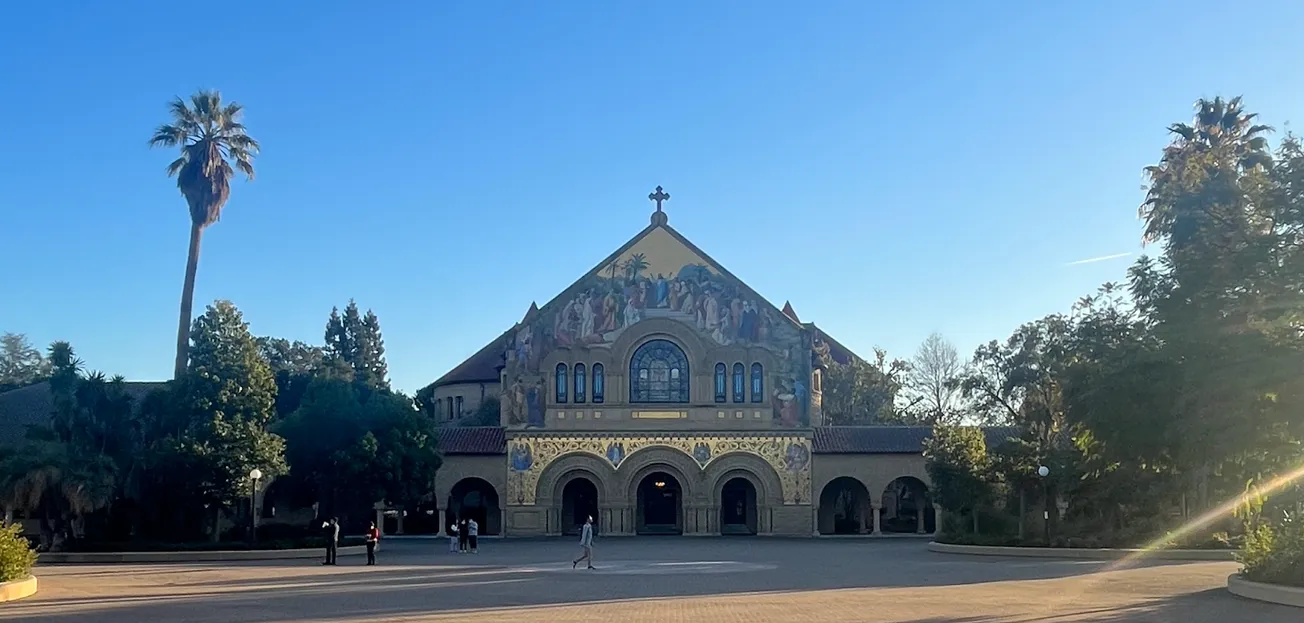Table of Contents
“I feel like if I don’t get the KKR internship, I will be a failure,” a friend told me last week as we walked across campus, “But I haven’t even applied yet.” In the heart of winter quarter, when short and cold days encourage students—myself included—to take unnecessarily busy schedules, the general malaise on campus is palpable. The silent fraternity row is only a symptom of a deeper problem that plagues Stanford’s culture: a profound crisis of meaning.
Stanford students are great at being told what to do. The moment there is any uncertainty, by and large we seek out comfort and wait for further instructions. Although I was not at Full Moon on the Quad—an event dedicated to students kissing one another—what happened at this year’s iteration is telling. The Daily reported that for “most of the event’s runtime between 11:30 p.m. and 12:30 a.m., students stood in groups.” In other words, Stanford students were too scared to kiss one another at an event literally designed with the sole purpose of kissing one another.
For every 25 high school seniors that apply to Stanford, 24 are rejected. To be admitted, students must build an impressive résumé and accrue leadership positions at their school and in their community before they can even drive. Meanwhile, excellence in the classroom is expected to the point where a single B can kill one's chances of getting into a ‘top’ school.
Partially as a result of the incredibly competitive college admission process, American childhood has been fundamentally altered. While the phrase “be home in time for dinner” may have been representative of a childhood sixty years ago, today, American kids would be much more likely to hear “I scheduled you for chess club at 6, violin lessons at 7, and mock trial prep at 8.”
Cross all of your t’s and dot your i’s for four years in high school and with a little luck and a lot of playing by the rules, you’ll find yourself admitted to Stanford. But Stanford is not the end. Despite Stanford being “The Ultimate Dream School,” nine Stanford students have committed suicide in the past four years. It is doubtless that many more suffer from other mental health challenges.
Sometime after arriving on campus, everyone comes to the realization that merely being at Stanford doesn’t mean that all of their problems are replaced with a sea of awesome friends and internship opportunities. It is at this point that Stanford students ought to reject the box-checking mentality that allowed them to get into Stanford and embrace meaningful personal development. But sadly, they don’t.
It is no surprise that after a wave of groundbreaking startups coming out of Stanford from the 1990s to the early 2010s, there hasn’t been a hugely impactful company emerge from a Stanford dorm room in over a decade. The creative spirit that drove that innovation is largely dead. In its place comes another set of boxes to check. An internship at Goldman Sachs. A return offer from Google. A two-year analyst program. A coterm in CS. Business school. To win the competition for these opportunities means more credentialing. Freshmen are pushed to apply for Stanford Marketing or Stanford Consulting, for Stanford Women in Business and BASES. Constantly building up a resume, developing skills for the next opportunity, never satisfied.
An edible and a movie on Thursday night. A few drinks and a quick stop at an overcrowded Kappa Sigma on Saturday. Constantly busy, yet not accomplishing anything meaningful. This is the story of the best university on the planet in 2023. Yes, Stanford Students may not be fun, but they’ve never had the chance to become anything more.









